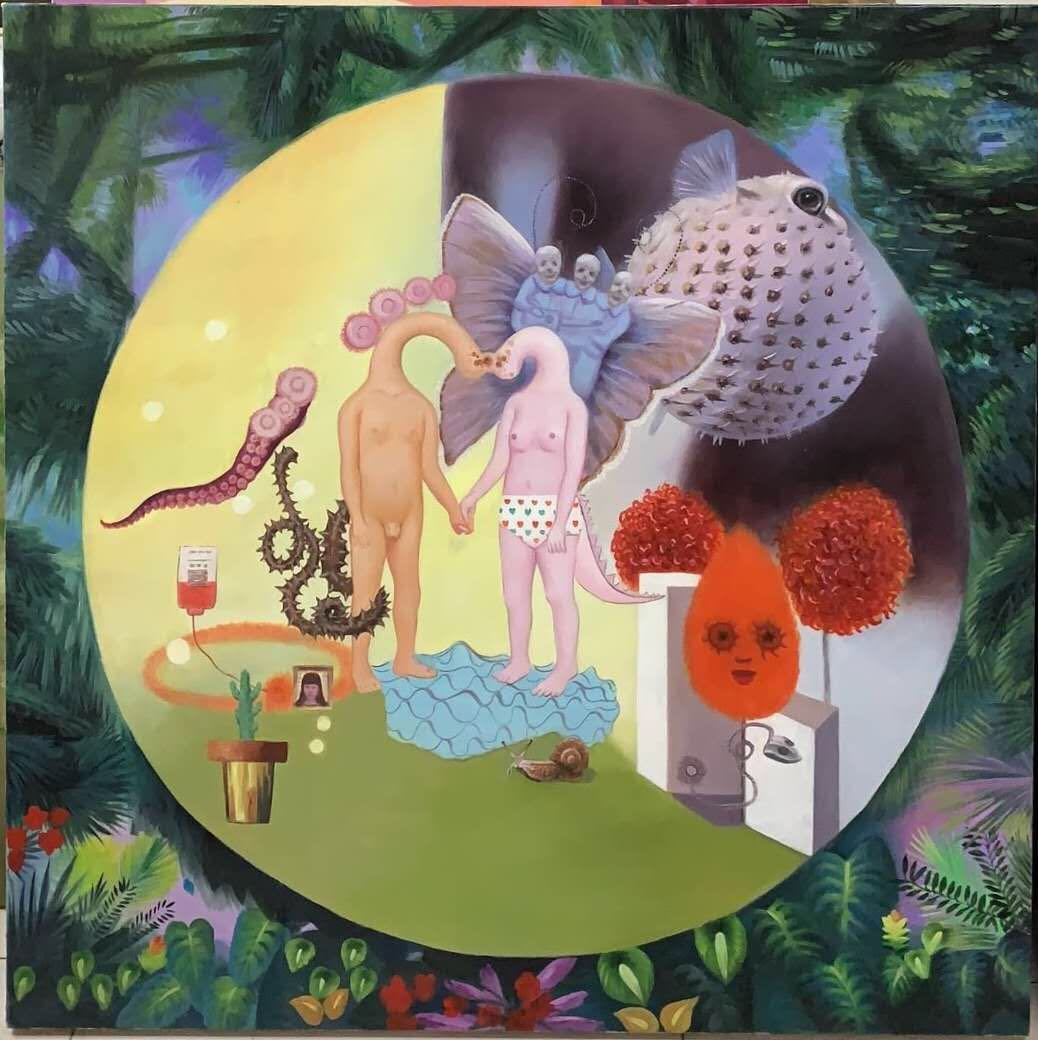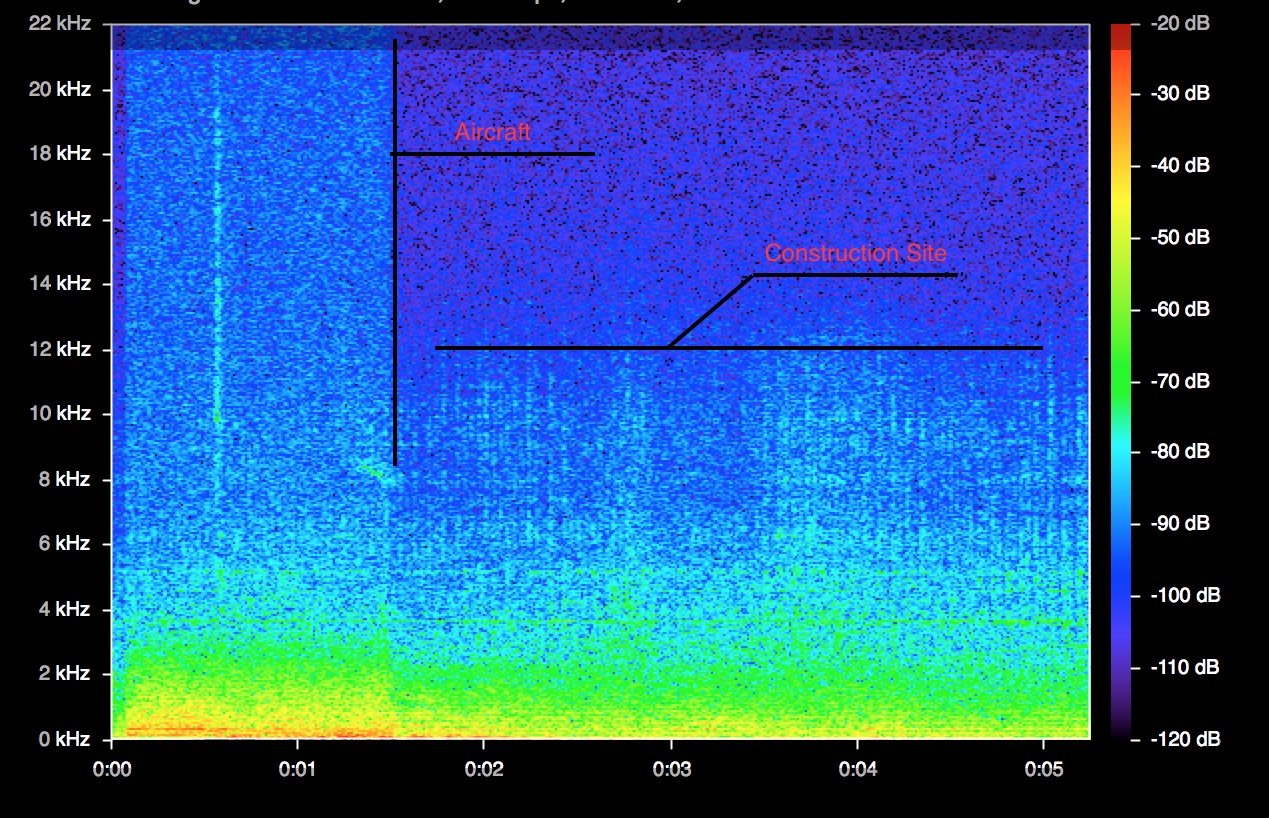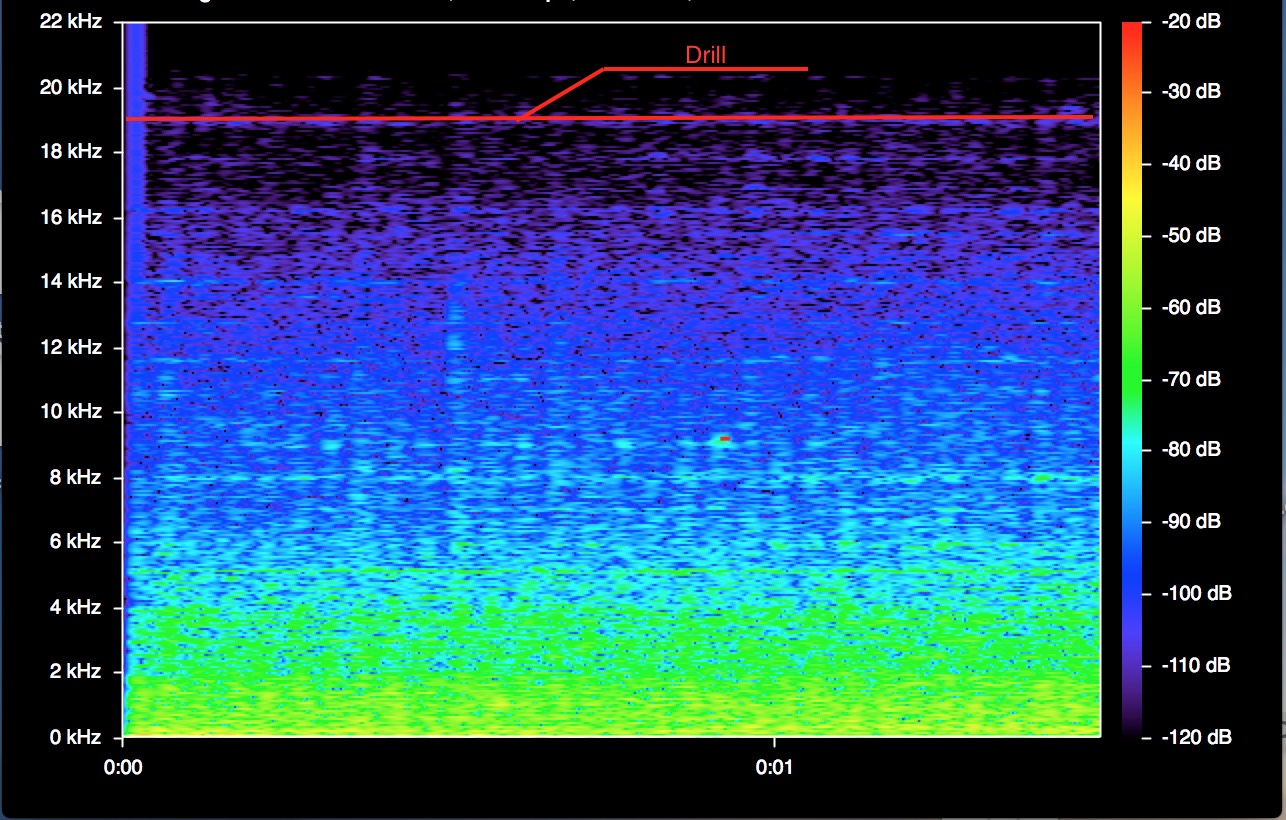Noise Pollution
produced by Lou Terry, Katy Tindle, Yuhyeon (Agnes) Jun, Rongzi Wu, and Ernie Lafky
Abstract
Although noise pollution is a commonly understood concept, and is widely acknowledged as a waste product of industrial and technological production (Malaspina and Brassier, 2018) its specific effects on our environments are less problematised than more material or visual pollutants, for example carbon emissions. Noise pollution has however, been acknowledged as having an adverse effect on our physical, social and mental wellbeing (Berglund et al., 1999), and have significant impact on our environment. Soundscape ecologist Bernie Krause, for example, posits that the impact of techno-industrial noise disrupts our sonic environment to the extent that it inhibits the ability of animals to vocalize effectively in their ‘spectral niche’, again inhibiting their social behaviors and potentially resulting in species loss (Krause, 1993).
In order to engage with noise pollution and its consequences it was essential for us to first interrogate the epistemological question of what is noise pollution? The definition of noise pollution as a phenomenon is polymorphous, bound not only by empirical qualities (Dbs, Hrtz), but the context in which is it perceived (Fong, 2016), its temporary frequency and its subjective aesthetic value. Given these ambiguities, the ability to decide what is acceptable noise and what is noise pollution, and subsequently enforce regulation to limit its effects, becomes a political power (Malaspina and Brassier, 2018). With this in mind, we began our research by referring to the noise abatement guidelines issues by Lewisham Council (Noise and other disturbances we investigate, 2019). These guidelines define what the local community can report to the council for investigation, and what the council legally cannot deal with. The majority of the noises the council were unable to address are symptomatic of intense urbanization, namely aircraft and railway noise, traffic, and approved road and commercial construction work. We chose to focus on these noises in particular as emblematic of industrialised pollution but also of the structures which deem them outside of local remit.
Via a series of walks around Lewisham we collected field recordings of the un-abated noises listed above. Using live flight data and traffic updates published online, we created a patch in Max-MSP which performed our field recordings in a manner dictated by the data, for example, as planes were seen to reach the centre of Lewisham, the volume of playback increased. The performance was then staged from one of our homes within Lewisham, intentionally loud and undeniably unpleasant. The justification for such a performance, if we were asked to stop, would be that it was a concert of unregulatable sounds and as such could continue ad infinitum. By inflicting the performance on an unconsenting public we were situated in the morally ambiguous position of being both complicit in and critical of the definitions of noise pollution.
Despite being concerned with the effects of urbanisation and industrialised production on our ecology we did not approach this project from a technologically conservatism or nature vs. culture essentialism. Rather than perpetuate the myth of a technological/natural binary as typified by the concept of the Anthropocene, we prefer to approach our environment as a series of ‘rich multispecies assemblages’ (Haraway, 2015). We hope to acknowledge, through a material semiotic approach, our own entanglement with polluting technologies and the fact that one of the results of our project was create yet more noise.
Podcast
Presentation
What follows is the text from our presentation on December 13th.
Our project is about noise pollution. It’s about questioning which noises are allowed to occur, who gets to decide, and what work those sounds get up to. The definition of noise is always up for grabs, it continuously exceeds attempts to delimit it. It’s definition changes through cultures, places and times. Noise can have a negative connotation and often represents a disruption of what is understood as socially and culturally acceptable. Therefore, the definition of what counts as noise pollution is a political one.


painting by Ronzi Wu
Our group originally converged through a mixed interest in both ecology and techno-feminism, and we have used this combination of outlooks to form the lens through which we have researched this project. We have queried how noise pollution, as an unseen pollutant, affects not just humans, but also animals, insects, and plants, whilst simultaneously interrogating the borders between cultural space and natural space.
Many human or industrial noises from things such as road traffic, aircraft, factories and construction work have detrimental impacts on humans and non-humans alike, though they are feebly dealt with under noise abatement laws. In humans, extended exposure to such sounds can cause hypertension, stress, heart disease, hearing loss, sleep disturbance, annoyance, even diabetes. Children’s learning development has been shown to suffer when classrooms are exposed to aircraft or traffic noise. Before mechanised shipping, the aural environment of whales is believed to have extended so far that those in the Arctic could hear the calls of their Antarctic cousins. Bats living near urban areas are often forced to fly further afield to successfully echolocate their prey, expending precious time and energy. Plants are even affected, as pollinatory insects often relocate away from noise.
Tega Brain’s “The Environment is not a System” helped us to see the limitations of discussing the environment as a closed system, and showed how the emergence of cybernetics alongside ecology in the early 20thC, influenced the approach of ecological discourse to one of a systems theory, where ecosystems are seen as analogous to circuits, containing components and flows of energy.
What’s interesting is how systems theory tends towards viewing ecosystems as things to be optimised towards certain (often human) ends. This theory also often views humans as exterior to ecosystems, and as beneficiaries of them. In our project, we are calling for a more inclusive reading of ecosystems, that’s based on multi-species encounters, which very much includes urban environments such as here in Lewisham, and within which we and the things we make are very much embedded.
In considering ecosystems and non-human life forms with respect to noise pollution, we looked at composer and environmentalist R. Murray Schafer. In "Tuning of the World", he calls for an awareness of sounds’ relatedness to each other and their environments, and criticizes what he terms the modern “schizophonic” experience of sound (that is, sounds experienced as detached from their sources), and characterizes this as an experience of urban environments. Whilst his romantic elevation of what he views as ecological, or natural sound over “non-natural", or human-made technological sound has legitimately been criticized, we did find it useful, in interrogating sounds, to think of them in terms of Schafer’s ideas of connectedness and relatedness, as things that arise from relations between entities and environments. Hearing sounds this way, as embedded in their environments, and not as autonomous sound objects, echoes techno-feminist ideas of agency as an emergent property of relations, and allows us to think about where those sounds are coming from, why, and the work they are doing. Sound is the echo of a long history of relationships that can be interrogated. For instance, as described on a BBC Radio 3 broadcast, some young starlings were found mimicking a long-disused barn engine, now silent, that must have been mimicked by the starlings’ ancestors. There are echoes in these bird calls that cross dimensions of time and bodies, animate and inanimate. Human technologies of the past are re-reverberated through the birds’ social engagement and interpretation of their sound worlds. What stories and echoes of us, and the machines we create, will be allowed to be told in future worlds, as the sums of these sonic reflections communicate, multiply, compete and drown one another out?
In creating our artifact, we narrowed down our broad queries to focus on our local area of Lewisham. We found an interesting definition of noise pollution from the Lewisham Council (which is where we are now). They can deal with loud music, parties, and entertainment venues, but they can’t deal with complaints about aircraft or railway noise, road traffic on a public highway, or approved commercial construction work. So we decided to make a sonic intervention made up entirely of aircraft and railway noise, road traffic, and commercial construction work. Our intervention was a computationally generated sound piece, controlled with a MAX patch, that took live data from planes flying over Lewisham, as well as traffic congestion and construction works data. The data was used to trigger and control the output of the field recordings. The piece was disseminated through loudspeakers from the private residence of one of our members, but was audible to the public.
The aim was to see what kind of reaction we could provoke – would we get a noise abatement notice using sounds which are not under the council’s remit to abate? Could we forward the abatement notice to the actual offenders: Heathrow, Transport for London, construction companies, and drivers? Or would the sounds go largely unnoticed, put down as yet more traffic from roads, aircraft overhead, or construction sites?
Our artifact uses computation in tandem with sound, to question the political structures that define what sounds are allowed to be heard. We mimic that which is sonically dominant, and suggest that those noises are the excess generated by an accepted norm. Only that which falls outside that norm, is deemed noise pollution. For example, in parts of LA, leaf blowers are banned, but that noise is no worse than corporate building construction. It’s just that those leaf blowers are operated by individuals, often immigrants, often poor.
An interesting perspective which mirrors our assumptions comes from author Brandon Labelle who writes, “Debates surrounding noise pollution, and related legalities pertaining to health standards, in seeking to achieve a quieter environment generally come to mirror particular moral regimes that locate deviant behavior as inherently out of place; the designing of quieter neighborhoods, as a civic project, partly positions noise on the side of violation, linking outspokenness, objection, and social difference to forms of audible excess and annoyance"
So the powerful are beyond the scope, but the less powerful can be cited.


Bernie Krause’s spectral niche theory suggests how inhabitants of ecosystems have evolved to vocalise in a way where each animal finds its own sonic niche in terms of frequency and time i.e. the sounds don’t overlap. Whilst it must be recognised that many features of long standing ecosystems, such as waterfalls, have very dominant sonic profiles (quite similar to that of a road), the inhabitants have evolved around these localised landmarks. Think of how a gull’s squak penetrates the crashing of waves. The same cannot be said for roads, which encroach on the habitats of various species of birds, insects, amphibians and mammals that are not adapted to these sounds. These sounds prevent many of them from finding partners, and have even been shown to cause PTSD-like symptoms and chronic stress, in birds particularly. Whilst trying not to romanticise waterways over highways, it’s worth thinking with a certain level of care towards the things we make and the sounds they make. We are suggesting that currently, our carelessness creates sonic inequality and injustice for many creatures whose lives depend on sound, much more than ours. What would the sonic profile of our roads sound like if nightingales could file noise complaints? Here are some spectrograms of our own. They don’t show sonic niches. They show the spectrally dominant sonic backdrop of Lewisham.






In her Cyborg Manifesto, Donna Haraway talks of Cyborg writing as survival through ‘seizing the tools to mark the world that marked them as other’ (Haraway, 55). In this sense our piece is cyborg music. We are sonically colonized in daily life, by that which is allowed to become sound, or waste energy, by the rhythms of rush hour, corporate building development projects, Virgin and British Airways, and the phallocentric origins that engendered these sounds, of engines, drills and planes. But, through hijacking, we have used technology to detect this colonization. With microphones, computers, software, and code we have created an artifact that reveals our everyday sonic experience as noise pollution.
An interesting thing also, that has cropped up through thinking about research in terms of a material semiotic approach, is how the discourse of noise pollution itself inherently changes definitions of noise. Because it is not just the physical characteristics of a noise (the decibel level, the pitch, timbral character, repetitive qualities etc.) which causes the noise to be damaging one’s physical or psychological state, but also how that sound is culturally and personally viewed, a noise that is recognised as being polluting actually becomes more annoying, and as we become collectively more aware of noise pollution as a phenomenon, the inconsiderate overspill noise makers and noise making things that seem oblivious or careless to this phenomenon become more infuriating. Therefore, as it reveals more sounds to be polluting, and more things/people to be noise polluters, the continued research and discourse of noise pollution actually creates more noise pollution.
We are also implicated in the cycle of consumerism and ecologically harmful waste with the electronic equipment we chose to use to make with our piece. Though ostensibly recyclable, our computers and other electronics are likely destined to wind up in a giant pile of toxic trash in a country such as China. People, families, even children comb over this trash, exposing themselves to toxic chemicals from our digital hardware, as they attempt to dismantle and recycle our electronic waste,And all these waste products are going to villages in Guangzhou, China. Economic Information Daily report from 2017 shows the copper content in the river even reaches 2%, exceeding the standard of hazardous waste. According to the data of Guangdong Environmental Monitoring Center, eighty percent of adults died of cancer in Huamei Village. And even a year after China refused to import waste from other countries, the river near Huamei village still has concentrations of cadmium and arsenic which highly exceed the standard.
Bibliography
Attali, J. (1985) Noise: the political economy of music. Minneapolis: University of Minnesota Press (Theory and history of literature, v. 16).
Brain, T. (2018) ‘The Environment Is Not A System’, A Peer-Reviewed Journal About, 7(1), pp. 152–165. doi: 10.7146/aprja.v7i1.116062.
Brennan, M. (no date) ‘Mark Brennan, The Great Silence |’. Available at: http://www.markbrennanfineart.ca/the-great-silence/ (Accessed: 14 December 2019).
Davis, N. (2019) ‘Noise pollution rules should be tightened to protect wildlife, say scientists’, The Guardian, 20 November. Available at: https://www.theguardian.com/environment/2019/nov/20/noise-pollution-wild-life-better-regulation (Accessed: 14 December 2019).
Florida Museum of Natural History (2018) Noise pollution causes chronic stress in birds, with health consequences for young, phys.org. Available at: https://phys.org/news/2018-01-noise-pollution-chronic-stress-birds.html (Accessed: 14 December 2019).
Fong, J. (2016) ‘Making operative concepts from Murray Schafer’s soundscapes typology: A qualitative and comparative analysis of noise pollution in Bangkok, Thailand and Los Angeles, California’, Urban Studies, 53(1), p. 173.
Goldsmith, M. (2015) Sound: a very short introduction. Oxford: University Press (Very short introductions).
Haraway, D. (2015) ‘Anthropocene, Capitalocene, Plantationocene, Chthulucene: Making Kin’, Environmental Humanities, 6(1), pp. 159–165. doi: 10.1215/22011919-3615934.
Harraway, D. (1991) ‘A Cyborg Manifesto’, in Science, Technology, and Socialist-Feminism in the Late Twentieth Century," in Simians, Cyborgs and Women: The Reinvention of Nature. New York: Routledge, pp. 149–181.
Kohut, T. (2015) ‘Noise Pollution and the Eco-Politics of Sound: Toxicity, Nature and Culture in the Contemporary Soundscape’, Leonardo Music Journal, 25(25), pp. 5–8. doi: 10.1162/LMJ_a_00924.
Krause, B. (1993) ‘The Niche Hypothesis: A virtual symphony of animal sounds, the origins of musical expression and the health of habitats’, Soundscape Newsletter (World Forum for Acoustic Ecology).
LaBelle, B. (2010) Acoustic territories sound culture and everyday life. New York ; London, New York: Continuum. Available at: https://www.dawsonera.com/guard/protected/dawson.jsp?name=https://idp.goldsmiths.ac.uk/idp/shibboleth&dest=http://www.dawsonera.com/depp/reader/protected/external/AbstractView/S9781441177254 (Accessed: 14 December 2019).
LaBelle, B. (2018) Sonic agency: sound and emergent forms of resistance. London : Goldsmiths Press. (Goldsmiths Press sonics series).
Latour, B. (2004) Politics of nature: how to bring the sciences into democracy. Cambridge, Mass: Harvard University Press.
Lewisham Council (no date) Noise and other disturbances we investigate. Available at: https://lewisham.gov.uk/myservices/environment/noise/noise-and-other-disturbances-we-investigate (Accessed: 14 December 2019).
Malaspina, C. and Brassier, R. (2018) An Epistemology of Noise: From Information Entropy to Normative Uncertainty. London, UNITED KINGDOM: Bloomsbury Publishing Plc. Available at: http://ebookcentral.proquest.com/lib/goldsmiths/detail.action?docID=5378035 (Accessed: 14 December 2019).
Pettman, D. (2017) Sonic intimacy: voice, species, technics (or, how to listen to the world). Redwood City: Stanford University Press.
Polli, A. (2012) ‘Soundscape, sonification, and sound activism’, AI & SOCIETY, 27(2), pp. 257–268. doi: 10.1007/s00146-011-0345-3.
Schafer, R. M. (1993) The soundscape: our sonic environment and the tuning of the world. Rochester, Vt. : [United States]: Destiny Books ; Distributed to the book trade in the United States by American International Distribution Corp.
Schimelpfenig, R. (2017) ‘The Drama of the Anthropocene: Can Deep Ecology, Romanticism, and Renaissance Science Rebalance Nature and Culture?: The Drama of the Anthropocene’, American Journal of Economics and Sociology, 76(4), pp. 821–1081. doi: 10.1111/ajes.12196.
Stansfeld, S. et al. (2005) ‘Aircraft and road traffic noise and children’s cognition and health: A cross-national study’, Lancet, 365, pp. 1942–9. doi: 10.1016/S0140-6736(05)66660-3.
Strathern, M. (1987) ‘An Awkward Relationship: The Case of Feminism and Anthropology’, Signs, 12(2), pp. 276–292.
Tsing, A. (2016) ‘Earth Stalked by Man’, Cambridge Anthropology; Oxford, 34(1), pp. 2–16. doi: http://dx.doi.org/10.3167/ca.2016.340102.
Turpin, E. and Davis, H. (2015) Art in the Anthropocene: Encounters Among Aesthetics, Politics, Environments and Epistemologies. Open Humanities Press (Critical Climate Change). Available at: http://www.oapen.org/download/?type=document&docid=560010 (Accessed: 14 December 2019).
Wajcman, J. (2004) TechnoFeminism. Cambridge: Polity.
Wajcman, J. (2010) ‘Feminist theories of technology’, Cambridge Journal of Economics, 34(1), pp. 143–152. doi: 10.1093/cje/ben057.






























































